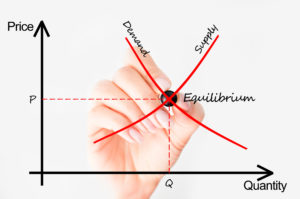 If you are shopping for a gemstone, no doubt you have encountered some confusing price issues. One vendor may list a gemstone at a particular price, and then you might see a similar gemstone offered for sale for hundreds of dollars less! How can you be sure you are getting the best price on your gemstone? This article will give you a clearer understanding of the gem trade, its global nature, and how world events can shape the gemstone market which will have an effect on the price you will pay.
If you are shopping for a gemstone, no doubt you have encountered some confusing price issues. One vendor may list a gemstone at a particular price, and then you might see a similar gemstone offered for sale for hundreds of dollars less! How can you be sure you are getting the best price on your gemstone? This article will give you a clearer understanding of the gem trade, its global nature, and how world events can shape the gemstone market which will have an effect on the price you will pay.
What Kind of Gem Is It?
The first issue you should investigate when shopping comparatively for a gemstone is the relative quality. Pay careful attention to the nomenclature a gemstone vendor uses. When a gemstone is described as “created” this usually refers to the fact that the gemstone was grown in a lab and not mined from the earth. Lab-created gems can certainly rival the beauty of natural gems. Reputable sellers will disclose the origin of the gem and some gem manufacturers will include telltale signs that allow a lab created gem to be easily identified by an expert. Gems that are created in a lab are frequently referred to as synthetic. They will appear very similar to a natural gemstone, even having the same composition, refractive index, and specific gravity. Do not confuse imitation gemstones with synthetic gemstones. An imitation gemstone may resemble a natural gemstone in color and appearance only. A synthetic will typically cost less than a natural gemstone. An imitation will cost far less. When looking at major price discrepancies, first make sure you are comparing actual gemstones of the same origin.
how to choose the right grade of gemstone?
Once you have determined that the gem you are planning to purchase is natural, you will quickly discover that not all gems are created equal. Gemstone quality is often expressed by vendors in a letter grading system such as “AAA”, “AA”, “A”, “B”, etc. These are general distinctions that refer to the overall quality of the gemstone. When comparing prices, make sure you are comparing similar quality gemstones. Think about what you most want in a gemstone. If you are looking for something in a particular color, remember that sapphires come in all colors from blue to purple, even green, pink and yellow. If precious gems are beyond your budget, remember that semi-precious gems offer a wide selection of color. Can’t afford a substantial ruby? Consider red spinel or rhodolite garnet instead. If a cornflower blue sapphire is beyond your budget, start looking for better quality iolite as an alternative. Semi-precious natural gemstones can be compelling rivals to precious colored gem. And remember, they are all naturally occurring minerals. The main difference in price between precious and semi-precious gems is due to the rarity of precious gems.
Understanding the World Market
Major gemstone deposits have been discovered, exploited, and depleted throughout the world. A significant portion of these gemstone mines are small “artisanal” mines where the mining is small scale an d done by hand. Gems available in today’s market may come from large industrial high impact mines as well as artisanal mines. Supply and demand has a huge impact on a gemstone’s price. When a gemstone deposit is discovered in a politically unstable area, as the case may be, world events will impact the price. Consider the Burmese Democracy and Freedom Act of 2003. This piece of legislation by the United States Government placed a trade embargo on goods from Burma, the world’s leading supplier of fine quality rubies. United States jewelers were forbidden under this law to import Burmese rubies, which are highly prized among gem collectors. Known for their superior color, Burmese rubies accounted for approximately 90% of the world’s ruby supply! And recent events such as the record breaking sale of Elizabeth Taylor’s exquisite jewelry collection, including the 8.25 carat Puerta Ruby ring, could heighten public interest in rubies. Increased demand coupled with decreased supply will certainly drive ruby prices skyward. Gather information about world events as you begin your quest for a desirable gemstone. Knowledge will mitigate your expectations.
d done by hand. Gems available in today’s market may come from large industrial high impact mines as well as artisanal mines. Supply and demand has a huge impact on a gemstone’s price. When a gemstone deposit is discovered in a politically unstable area, as the case may be, world events will impact the price. Consider the Burmese Democracy and Freedom Act of 2003. This piece of legislation by the United States Government placed a trade embargo on goods from Burma, the world’s leading supplier of fine quality rubies. United States jewelers were forbidden under this law to import Burmese rubies, which are highly prized among gem collectors. Known for their superior color, Burmese rubies accounted for approximately 90% of the world’s ruby supply! And recent events such as the record breaking sale of Elizabeth Taylor’s exquisite jewelry collection, including the 8.25 carat Puerta Ruby ring, could heighten public interest in rubies. Increased demand coupled with decreased supply will certainly drive ruby prices skyward. Gather information about world events as you begin your quest for a desirable gemstone. Knowledge will mitigate your expectations.
A Gemstone’s Worth
A gemstone’s inherent value is in its beauty. If it pleases you and brings a smile to your face, it is a worthy purchase. Only large, natural, and rare precious gems should be seen as an investment, as these have a tendency to hold their value. Did you recently purchase a gemstone? Online or in Person? How much did you pay? Give us an idea of what it took to make your gemstone dream come true. We want to hear your story.
Read more posts from the Gemstone Buying Guide series
